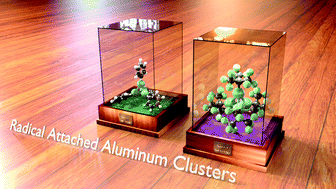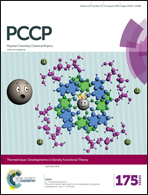Radical attached aluminum nanoclusters: an alternative way of cluster stabilization†
Abstract
The stability and electronic structure of radical attached aluminum nanoclusters are investigated using density functional theory (DFT). A detailed investigation shows good correlation between the thermodynamic stability of radical attached clusters and the stability of the attached radical anions. All other calculated parameters like HOMO–LUMO gap and charge transfer are also found to be consistent with the observed thermodynamic stabilities of the complexes. Investigation of the electronic structure of radical attached complexes further shows the presence of jellium structures within the core similar to the ligated clusters. Comparison with available experimental and theoretical data also proves the validity of superatomic complex theory for the radical attached clusters as well. Based on the evaluated thermodynamic parameters, selected radical attached clusters are observed to be more thermodynamically stable in comparison with experimentally synthesized ligated clusters. Stabilization of small metal clusters is one of the greatest challenges in current cluster science and the present investigation confirms the fact that radical attached clusters can provide a viable alternative to ligated clusters in the future.


 Please wait while we load your content...
Please wait while we load your content...